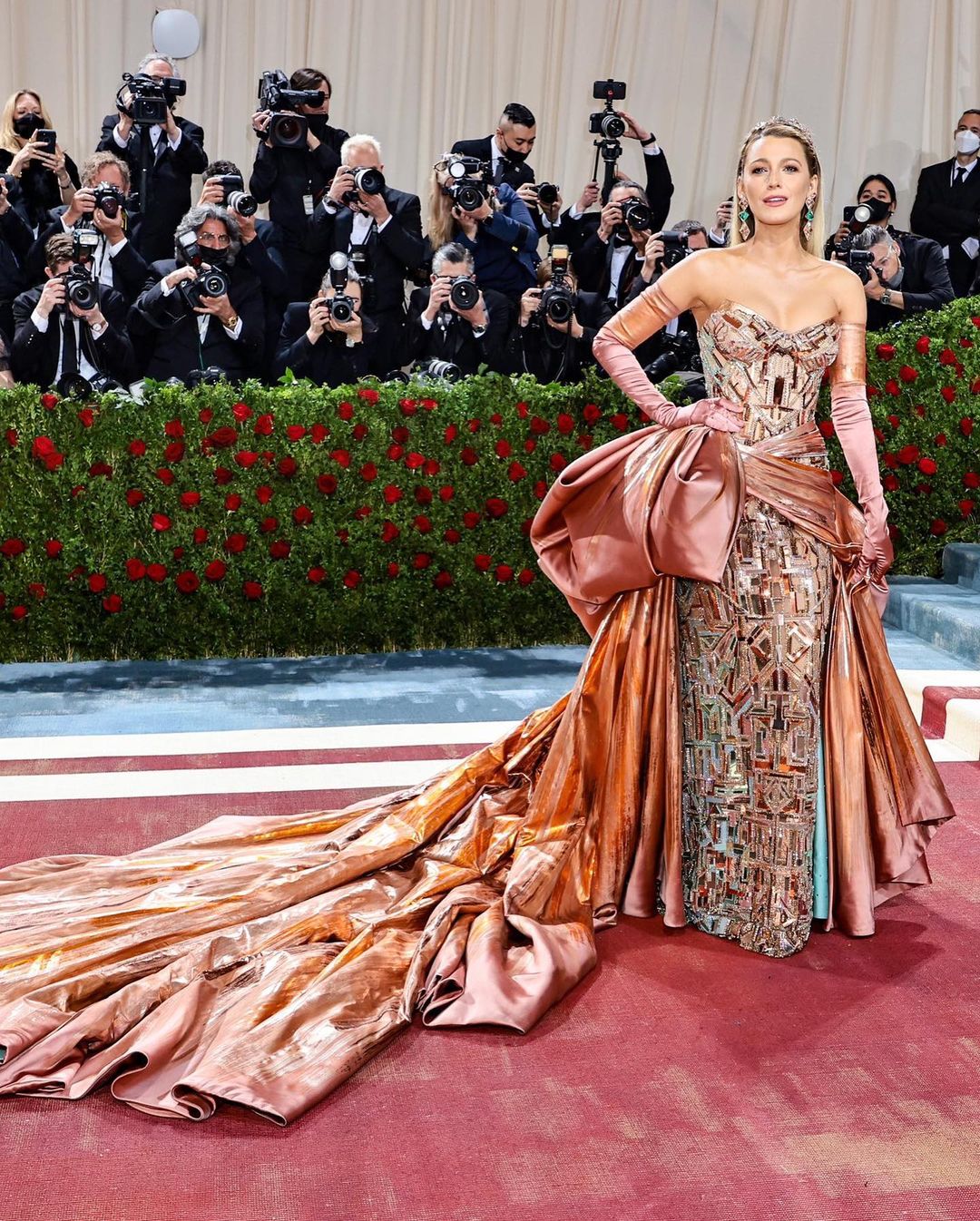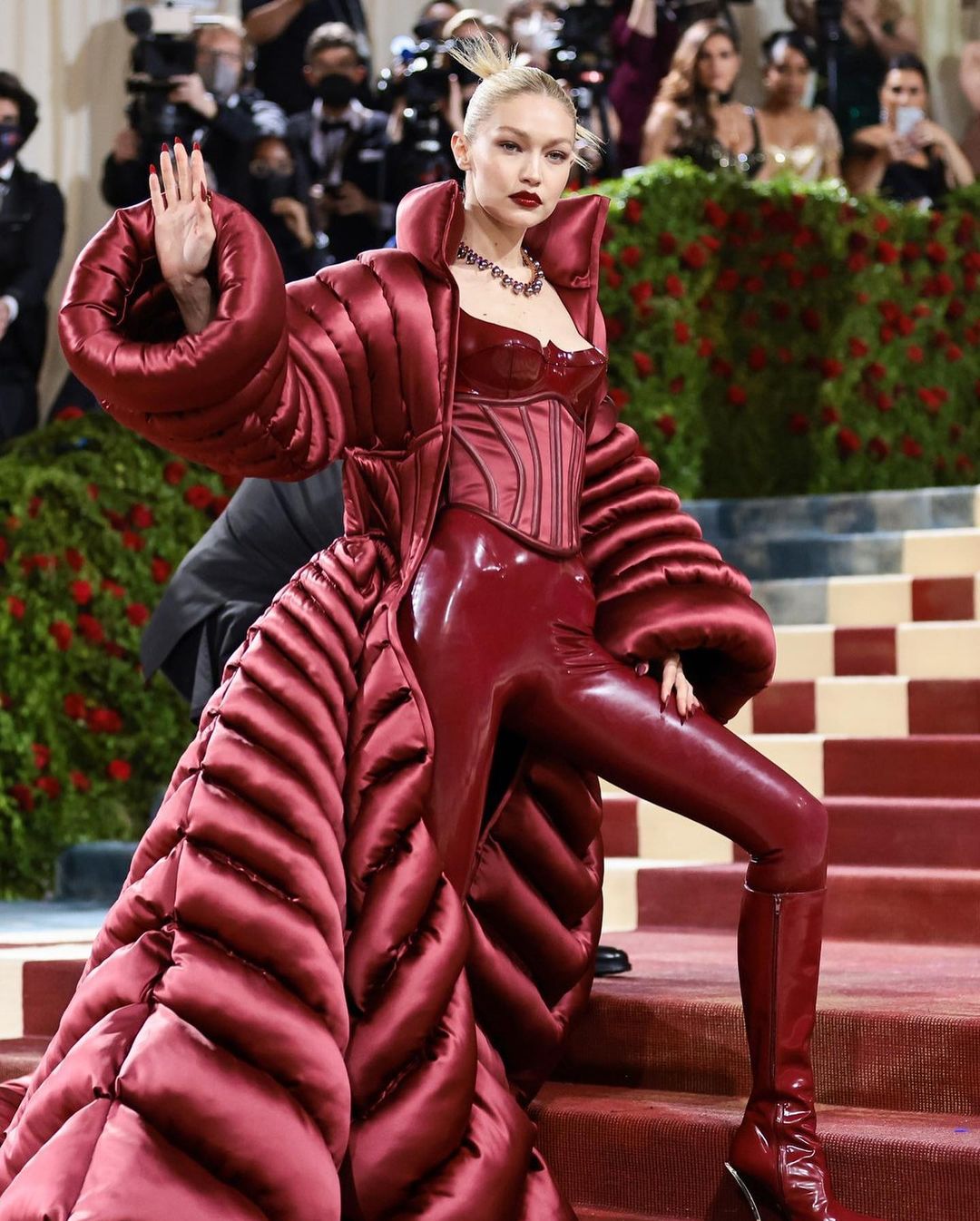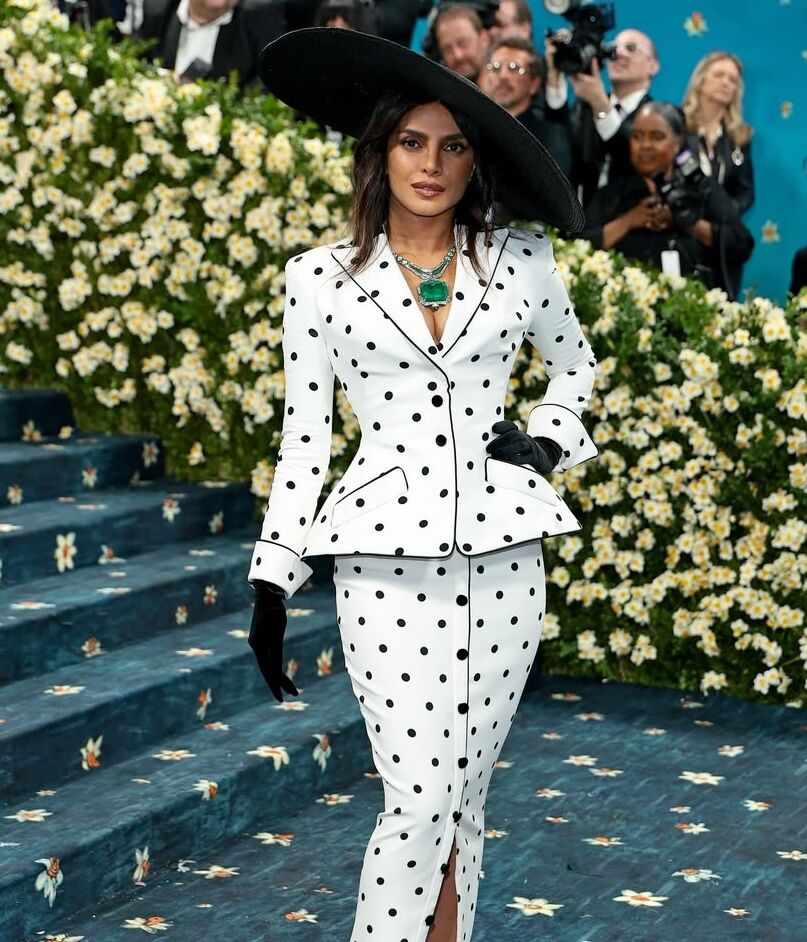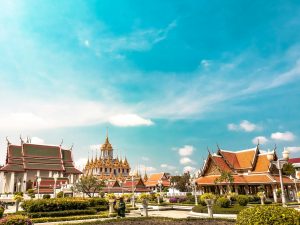Each year, the first Monday of May transforms New York City into the epicentre of fashion and culture. The Met Gala, formally the Costume Institute Benefit, has grown from a modest charity dinner to one of the most anticipated events in the world, for which tickets reportedly cost $75,000.

Blake Lively at Met Gala 2022
Mark your calendar: the 2026 Met Gala is expected to take place on May 4, 2026, at the Metropolitan Museum of Art. ‘The title ‘Costume Art’ refers to the history of the costume institute’, said Andrew Bolton, the Costume Institute’s curator, at a press conference last week. Fashion, he explained, has ‘the status of art because of, and not in spite of, its relation to the body’. The exhibit will match two hundred pieces of art with two hundred garments and accessories, creating a visual and thematic link between fashion and art.
The Met Gala began in 1948 as a fundraiser for the Costume Institute at the Metropolitan Museum of Art. Under the direction of Anna Wintour, it evolved into the most anticipated cultural events of the year, where celebrities, fashion designers, and cultural icons gather to support the year’s theme. Per CNN: ‘It typically raises record funds for the museum: Last year, it brought in a whopping $31 million. The gala is the sole fundraiser for the Costume Institute’s exhibitions, acquisitions and maintenance; unlike other curatorial departments at the Met, the Costume Institute receives no money from the museum’s budget.’
With excitement and anticipation building for the 2026 edition, let’s take a closer look at the history, milestones and cultural relevance of the Met Gala.
Met Gala: History
The Met Gala began in 1948, when fashion publicist Eleanor Lambert created a fundraising dinner to support the newly established Costume Institute at the Metropolitan Museum of Art. Held at the Waldorf Astoria, the Gala was a modest social gathering attended by New York elite, with tickets priced at $50. It had little media attention because it was primarily a charity event within the New York social calendar and the attendees comprised members of New York high society or the city’s fashion industry.
A major transformation came in 1972 with the arrival of Diana Vreeland, former editor-in-chief of Vogue, who joined the Costume Institute as a special consultant. Vreeland introduced themes, theatrical presentations, and celebrity guests, shifting the event from a fundraiser to a glamorous cultural evening with attendees like Elizabeth Taylor, Andy Warhol, Bianca Jagger, Diana Ross, Elton John, Madonna, Barbra Streisand and Cher.
It was during the Vreeland years that the Gala was first held at the Met and Gala themes were introduced, with The World of Balenciaga—marking the first time a fashion exhibit and the gala are conceptually linked, and attendees were given the opportunity to express themselves through fashion, producing elaborate, highly publicized outfits inspired by the evening’s theme and cultural context.

Gigi Hadid at Met Gala 2022
Following Vreeland’s reign from 1972 to 1987 and Pat Buckley’s term as a consultant to the Costume Institute from 1988 to 1995, Anna Wintour, Vogue global editorial director and chief content officer for Condé Nast, took over as Chair. Wintour added influential figures in fashion, film, music, and sports to the guest list, strengthened partnerships with fashion designers, and built a tightly coordinated media strategy. Her approach transformed the Gala into an exclusive, highly curated night that combined philanthropy, fashion and celebrity influence.
Under her leadership, fundraising totals rose dramatically, and the event became central to financing the Costume Institute exhibits and operations, with US$9 million raised in 2013, $12 million the following year, and a record $17.4 million by 2022. Wintour also established the first Monday in May as the permanent date, turning it into a fixture on the fashion calendar, where each look is documented. Who can forget Rihanna’s 2018 papal-inspired Margiela gown, Billy Porter’s 2019 golden-winged entrance and Lady Gaga’s strip tease on the 2019 pink carpet?
Over time, the Met Gala has evolved beyond the New York fashion epicenter to become increasingly global and diverse. By the early 2000s, the event entered a new era shaped by the rise of global celebrity culture and digital media. The 2004 Gala marked the beginning of worldwide red carpet coverage, positioning the event as a stage for designers to unveil their most ambitious creations. In 2015, the exhibition ‘China: Through the Looking Glass’ broke attendance and fundraising records, illustrating the Gala’s growing cultural reach and its ability to spark international dialogue about fashion and cross-cultural interpretation.
The 2015 Gala themed “China: Through the Looking Glass” was the subject of a documentary—The First Monday in May, directed by Andrew Rossi and produced by Condé Nast Entertainment, Vogue, and Relativity Studios. Guests received notices about the restriction of selfies and social media in the gala. The no-selfie ordinance was extended to the following editions of the Met Gala. Vogue hosts the Met Gala red-carpet livestream on its website and digital platforms.

Shah Rukh Khan at Met Gala 2025
The pandemic in 2020 halted the Gala for the first time in its history, highlighting its established role in the cultural landscape. When it returned in 2021, the event embraced digital engagement, live-streaming, and social media participation, making it accessible to global audiences. Themes such as ‘In America: A Lexicon of Fashion’ and ‘Karl Lagerfeld: A Line of Beauty’ demonstrated the event’s continued commitment to exploring heritage, national identity, and the legacies of influential designers. PS At the 2021 Met Gala, Rosé became the first artist from the K-pop girl group BLACKPINK to attend and TikTok star Addison Rae also made her first appearance the same year.
Met Gala: Themes That Reflect and Shape Culture
Dubbed the Oscars of fashion, each Met Gala theme acts as a lens through which fashion, history, and identity are interpreted. The themes are academically curated by the Costume Institute to explore fashion’s intersections with art, politics, gender and culture. Russian ballet costumes were highlighted at the 1978 Met Gala. The 1979 Met Gala theme was a lesson in European fashion. Yves Saint Laurent became the first living designer honoured by the Met Gala with a retrospective celebrating his 25-year career.
Paying homage to India’s rich cultural and artistic heritage, the 1985 Met Gala’s theme focused on the dress of India’s royals throughout history. The 1996 Met Gala was an homage to the late Christian Dior. In 2015, ‘China: Through the Looking Glass’ sparked dialogue around Orientalism and cultural exchange. The exhibit was a joint effort between the head of the Department of Asian Art and the Costume Institute, showing looks from Chanel, Alexander McQueen, and Christian Dior Haute Couture.
In 2018, ‘Heavenly Bodies’ examined the complex relationship between Catholicism and couture, including dozens of artifacts and objects sent over from the Vatican. Guests rose to the occasion at the annual gala, with Rihanna dressing as the pope and Katy Perry as an angel.
Themes like 2019’s ‘Camp: Notes on Fashion’ challenged the definition of fashion, turning Susan Sontag’s essay into a dress code. For 2019’s exhibition, Bolton drew on Susan Sontag’s seminal 1964 essay, Notes on Camp. Among the pieces on display were looks from Off-White, Schiaparelli, Moschino, Dior and others.

Priyanka Chopra at Met Gala 2025
2021’s ‘In America: A Lexicon of Fashion’ asked how fashion could articulate national identity in a moment of social and political upheaval. ‘American designers are at the forefront of conversations around diversity, inclusivity, sustainability, gender fluidity, and body positivity,’ Andrew Bolton, The Costume Institute curator told Vogue. ‘The framework of the show enables us to focus on the younger designers who are engaging thoughtfully and deeply with those ideas.’
In 2023, Met Gala was held in honour of Karl Lagerfeld, featuring 150 pieces spanning from 1950 to 2019 i.e. his legacy at Chloé, Fendi, Chanel and his own eponymous label. ‘We didn’t want to emphasise Karl the man, who has long been the subject of breathless mythologising, largely the result of his own self-invention’, Bolton told the press. ‘The serpentine line signified his historicist, romantic, and decorative impulses, and the straight line denoted his modernist, classicist and minimalist tendencies’.
The 2025 Met Gala theme, ‘Superfine: Tailoring Black Style’, focused on the historical and contemporary impact of Black fashion; the theme spotlighted Black dandyism—an aesthetic and political practice that fuses sartorial elegance with cultural resistance. The dress code, “Tailored for You,” focused on suiting and menswear and the exhibit nodded to Black style told through clothing by the African diaspora since the 18th century. British Vogue highlighted, ‘At its core, it’s a fashion revolution, a movement steeped in history, resistance, and pride. But its impact stretches far beyond the sartorial. It’s a cultural statement, an act of protest, and, above all, an enduring celebration of individuality.’
Met Gala: Cultural Relevance
The Met Gala holds strong cultural relevance as it brings together fashion, art, and popular culture on a global stage. Its annual theme links the red carpet to the museum exhibit, creating a visual narrative that encourages audiences to view fashion within historical and cultural contexts. With the world watching, the Met Gala allows fashion to act as a form of commentary, where topics such as representation, cultural appropriation, inclusivity and identity are debated.
The Met Gala also acts as a cultural mirror, reflecting shifts in society, media, and celebrity culture. Digital coverage and celebrity influence transform the event into a shared cultural moment, reaching audiences far beyond the museum steps. Its digital expansion—through livestreams, social media, and online commentary—allows audiences to participate, even if they never enter the museum.
The Met Gala now stands as the most powerful cultural stage worldwide, reinforcing fashion as an art form worthy of museum preservation and academic study. It brings artistry, philanthropy, and celebrity together, influencing how society understands style, identity, and cultural institutions.
10 Things We Bet You Didn’t Know About the Met Gala
- It didn’t start as a fashion event:The Met Gala began in 1948 as a charity dinner at the Waldorf Astoria, organised by fashion publicist Eleanor Lambert. It was a social fundraiser.
- Tickets were once affordable: In the early years, a ticket cost $50. Today, individual tickets can reach $50,000, with tables going well over $300,000.
- Anna Wintour controls everything: Since 1995, Anna Wintour has overseen every detail—guest list, seating plan, menu, and even who can speak to whom.
- The guest list is curated like a strategy board: Wintour places guests based on influence, storylines, and cultural relevance. Rivals are seated apart!
- No selfies allowed: Since 2015, the event has banned selfies and phone use. The Met wants the night to feel exclusive and intimate, although celebrities have famously broken the rule.
- The red carpet costs millions: The carpeted entrance, staging, lighting, florals, and media structure are part of a multi-million-dollar production—often costing more than film premieres.
- Every theme links to a museum exhibition: The Gala raises funds for the Met’s Costume Institute, and each dress code reflects the annual exhibition.
- Not all designers can dress anyone: Designers must be approved and are often expected to purchase tables. They then select a celebrity to represent their brand.
- Seating is more powerful than outfits: The seating chart signals relevance. Being placed near Anna Wintour or sponsors indicates rising status, while the edges suggest fading influence.
- There’s a secret after-party rule: While many after-parties exist, insiders say the most exclusive one is invite-only, unpublicised, and often held in private residences.

Jasmeen Dugal is Associate Editor at FashionABC, contributing her insights on fashion, technology, and sustainability. She brings with herself more than two decades of editorial experience, working for national newspapers and luxury magazines in India.
Jasmeen Dugal has worked with exchange4media as a senior writer contributing articles on the country’s advertising and marketing movements, and then with Condenast India as Net Editor where she helmed Vogue India’s official website in terms of design, layout and daily content. Besides this, she is also an entrepreneur running her own luxury portal, Explosivefashion, which highlights the latest in luxury fashion and hospitality.











